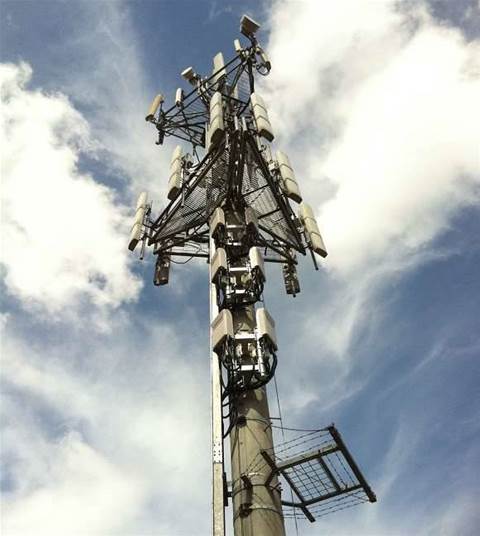Telstra, Optus and TPG Internet have collectively snapped up almost $2 billion of spectrum for future mobile data services, but not all the so-called 'waterfront' assets sold at auction.
The Australian Communications and Media Authority, which ran the highly-anticipated auction, announced the winning bidders this morning.
Telstra's winning bid for spectrum in both the 700 MHz and 2.5 GHz bands came to $1.3 billion, while Optus bought $649 million worth of the assets, which have been flagged to underpin the expansion of Long Term Evolution (LTE) networks.
Optus chief country officer Kevin Russell said the assets would allow expansion of 4G services across Australia, and boost "network capacity for 4G data services to our metropolitan customers".
Telstra made similar comments, adding that the 700 MHz assets would mean "better in-building coverage in metro and suburban areas."
The announcement also confirmed two months of speculation that TPG Internet would have a tilt at the less expensive 2.5 GHz spectrum, snapping up 20 MHz for $13.5 million.
A TPG spokesperson said the company believed the 2.5 GHz spectrum was a "valuable asset which, with developing technologies, will bring TPG the ability to offer innovative and value-adding products to its customers, particularly in the increasingly important wireless broadband market".
The spokesperson provided no further details on how TPG might use its purchased assets.
Ovum senior analyst Nicole McCormick said a potential transition by TPG from mobile virtual network operator (MVNO) to mobile network operator "would be ambitious" but not unrealistic.
"TPG has demonstrated expertise in running a lean business model and it has the platforms (e.g. billing) in place to support an extended mobile business," she said.
Unsold portion
Of the 700 MHz of spectrum on offer, 30 MHz was passed in, meaning the Government did not achieve the almost $3 billion the auction had been forecast to net.
Vodafone Hutchison Australia did not participate in the auction, according to the ACMA. The results also confirmed that Google — once considered a 'dark horse' entrant — did not end up making a play.
As a result, the Commonwealth was left holding approximately $1 billion worth of 700 MHz spectrum.
"We intend to return it to the market in the next two or three years," Communications Minister Stephen Conroy said.
"The ACMA has previously stated that it should be assumed any unsold spectrum would be returned to market in the short term, or at a price that is lower than the reserve price set for this auction.
"I endorse that as a sensible view and intend to provide the ACMA with a formal direction that supports that approach, following public consultation."
South Australian Liberal Senator Simon Birmingham criticised the Government's failure to shift all of the spectrum assets on offer.
"Conroy's billion $$$ spectrum auction shortfall another case of over-promising & under delivering from serial offender minister," he tweeted.
Conroy faced criticism when he set the reserve price for 700 MHz assets in December last year, with some carriers and politicians branding it as unrealistic and unworkable.
1800 MHz dark horse
Successful bidders have until the second half of 2014 to stump up the cash for their respective winnings.
The auction was challenged by initial deployments of next-generation 4G mobile networks being undertaken in the 1800 MHz band in metropolitan areas.
The ACMA is also currently scoping proposals to make 1800 MHz assets available to telcos in regional and rural Australia as well, potentially making the band a real alternative to the significantly more expensive 700 MHz.
The 700 MHz licenses will be operational at the start of 2015, while most 2.5 GHz licenses commence October 1, 2014.






_(11).jpg&h=142&w=230&c=1&s=1)





.jpg&w=100&c=1&s=0)
_(8).jpg&w=100&c=1&s=0)









